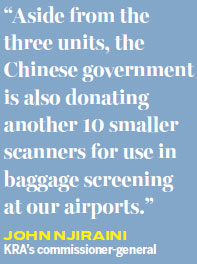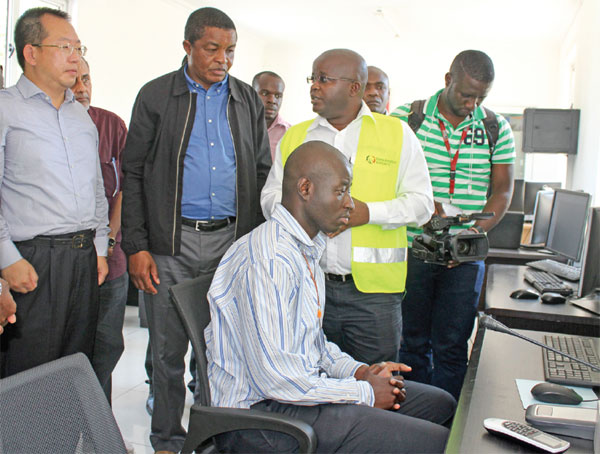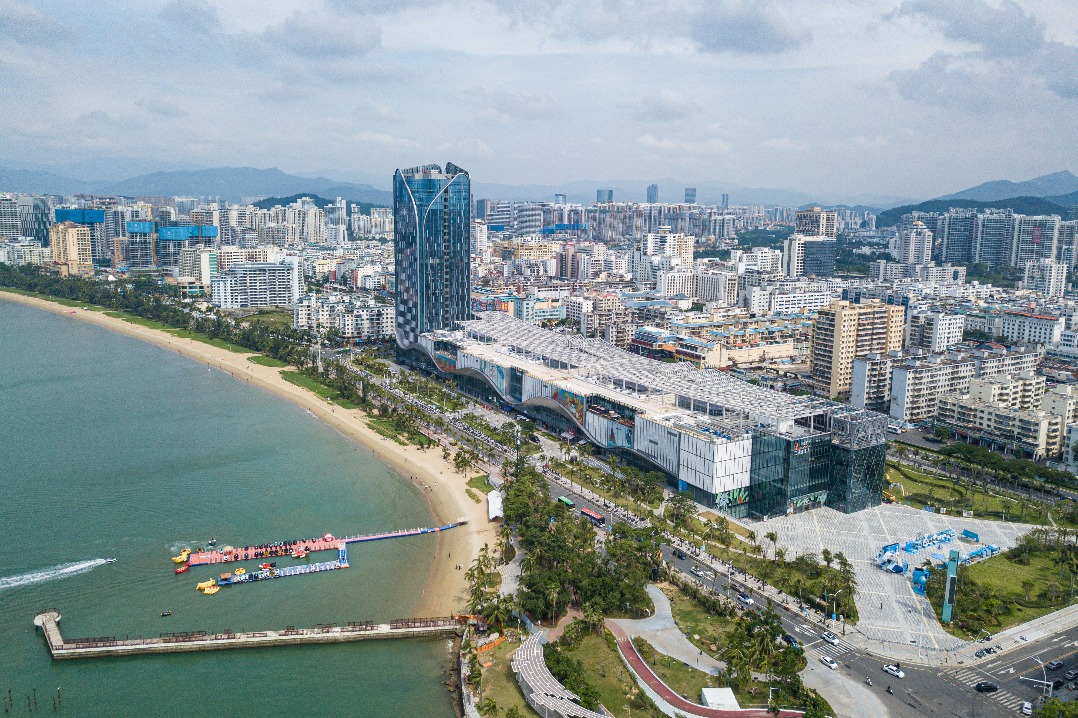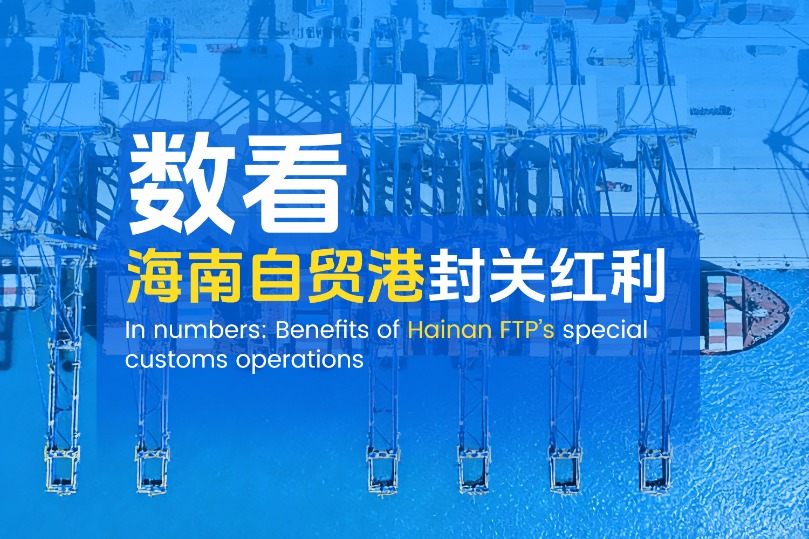New scanners to help boost port efficiency

High-tech tools provided by China will increase processing of containers and cut down on crime
Efficiency at the Port of Mombasa in Kenya is expected to go up by about 50 percent with the deployment of three new high-tech cargo container scanners.
The scanners, provided by the Chinese government, bring to four the number of scanners deployed at the port, buoying the Kenya Revenue Authority's capacity to tighten its fight against an illicit economy that is estimated to cost Kenya's taxpayers millions of dollars annually in unpaid duty and taxes.
According to John Njiraini, the KRA's commissioner-general, the nonintrusive tools are part of the agency's strategic plan to use technology to improve efficiency, increasing the number of containers scanned daily from 500 to about 750.
| Guo Ce (left), economic and commercial counselor of the Chinese embassy in Kenya, and John Njiraini (second left), KRA's commissioner-general, visit the operation office for container scanners. Provided to China Daily |
"Aside from the three units, the Chinese government is also donating another 10 smaller scanners for use in baggage screening at our airports. We expect to have this equipment delivered and installed this year, a fact which will dramatically help in improving customer facilitation at our airport terminals," Njiraini says.
"It is clear from these two initiatives that Kenya-China collaboration in customs matters, including cooperation between China Customs and KRA, is set to take on great importance in the coming years," he adds.
Guo Ce, the economic and commercial counselor of the Chinese embassy in Kenya, says the scanners will play an important role in fighting crime, while boosting revenue collection.
"I believe these three modern and advanced container scanners can help Mombasa Port be operated more efficiently and safely, so as to drive local economic development and tremendously spur Kenya's, as well as the East Africa's, economic growth," he says.

The modern scanners come at a time when the Port of Mombasa is witnessing rapid transformation to support the country's economic ambitions. The port's total annual freight handling is expected to exceed 50 million tons by 2030, doubling from 24 million in 2015.
Recent undertakings by the government, including the port's expansion and construction of the Mombasa-Nairobi Standard Gauge Railway, have been geared toward making the port more competitive regionally. But as the capacity of the port has expanded, delays in clearing containers has been a major challenge.
The scanners are intended to ease congestion. "This is a step to the right direction," says Meshack Kipturgo, the managing director of Siginon Group, a logistics company in Kenya. "It will speed up the turnaround of trucks at the port that delays cargo clearance," he adds.
Gilbert Langat, chief executive officer of the Shippers Council, says: "Scanners provide nonintrusive cargo verification. It is expected that they will improve the productivity and efficiency of cargo clearance. But what is important is for the scanners to be networked with the clearance system to enable online clearance. If the reports and bookings have a human element, then we lose the benefit of efficiency and handicap our ultimate goals of going paperless."
The Port of Mombasa is the biggest port in East Africa. It is the region's gateway to such countries as Uganda, Rwanda, Burundi and South Sudan. Last year, its container traffic increased by 2.4 percent as it handled imports of fuel and consumer goods and exports of tea and coffee.
lucymorangi@chinadaily.com.cn
(China Daily Africa Weekly 09/01/2017 page28)































